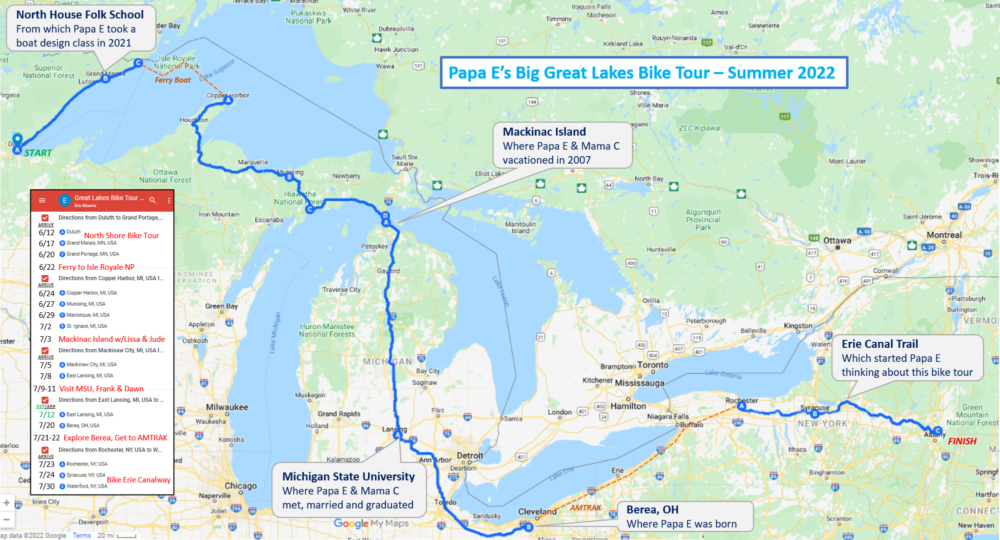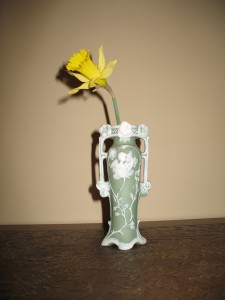“Oh my gosh!” I blurted. I was lingering over dessert with my family and looking at the brochure I’d received in the mail for a bike ride I’d heard about.
“What, Dad?” asked my daughter Elisabeth, who was newly home from college.
“The Cross Florida Bike Ride is a one-day ride … 173 miles!”
“Whoa!” came her incredulous reaction. She paused. “Well, I will if you will!”
Thus began our biggest bicycling adventure together. She’d joined her brothers Kevin and Brian the previous summer to ride the Bicycle Ride Across Georgia with me, but its longest day was an optional 100-mile “century” I’d ridden. The Cross Florida would be a whole new level of riding for us.
We agreed on a training schedule that would have us riding increasing distances over a six-week period. But weather and work interfered with our intentions and our preparation was less than ideal. Nevertheless, as the first weekend in May approached we gamely loaded our bikes and journeyed with family to our “base camp” at my parents’ home in Orlando.
“This is ambitious!” my daughter declared as we pedaled alongside picturesque coastal waterways in the early morning sun not long after our ocean-side start at Cocoa Beach. Already it was apparent that there were three groups of riders that I’d dubbed Racers, Riders and Tourists. We were in the last group, enjoying a pleasant ride at a moderate pace – even stopping to take an occasional picture! The Racers had quickly formed into hard-riding pace lines and were now miles ahead of us. We would catch up with clusters of Riders at the first few official rest stops, but gradually encountered fewer of them as the day progressed. We were riding steadily at about 17 mph, but we lost time by stopping a lot!
At one point, just as we turned onto a state highway by a large lake, an airboat operator cranked up his fan, nearly knocking me down with a gritty blast. Later, surrounded by orange groves in the beautiful highlands area north of Orlando, we briefly celebrated passing the century mark.
Just twenty miles later a conjoined pair of love bugs hit my face and momentarily distracted me. Elisabeth was riding just behind and somehow our wheels touched. She lost control and went down. Hard. I quickly dropped my bike on the grassy shoulder and ran back to her as motorists from either direction stopped.
“Are you okay?” we all shouted.
“I … think … so …” she answered shakily. I helped her get untangled from her bike and began to remove it from the roadway as she slowly stood up and limped off behind me. “I’m okay,” she hollered to the drivers. She grabbed a water bottle and sat in a small patch of shade next to a bush, gingerly checking herself for injuries. In the crash she’d smacked her thigh pretty hard.
Seeing that she really was okay, I checked her bike. “It’s not damaged,” I said. “There’s a rest stop in just one mile. Do you think you can ride it there?”
We took a long break at the rest stop – eating snacks, drinking fluids, testing where she hurt and how much. “Would you prefer to take a sag vehicle to the finish or keep riding?” I asked.
She thought a moment. “You’re going to keep riding, aren’t you?” more a statement than a question.
“I thought I would, unless you’d rather I didn’t.”
“Then I’m going to keep riding, too!”
“Are you sure?” I asked. “We’ll have to average at least 12 mph to get to the finish before cutoff. Otherwise we’ll be swept by the sag wagon.”
“Then let’s get going,” was her reply.
We rode slowly together, still enjoying the scenery – now hot and hazy in the late afternoon sunlight. Once, in the distance, I thought I spied a very large cat cross the narrow, rural highway. “Florida panther?” I wondered to myself. We stopped briefly at the first of the two remaining rest stops, but as we approached the last one, she said, “Dad, let’s keep going. We can’t afford the time.”
Not long after, in fading twilight we crossed the finish line of the Cross Florida Bike Ride. We were within fifteen minutes of the cutoff.
It had been an ambitious undertaking, a long bicycle ride that we’d enjoyed – and overcome – together. My daughter had dug deep within herself to finish what she’d come to do. To this day she says, “That was the hardest thing I’ve ever done!”
To this day I’m very proud of the tough, talented, wonderful person that she is.

